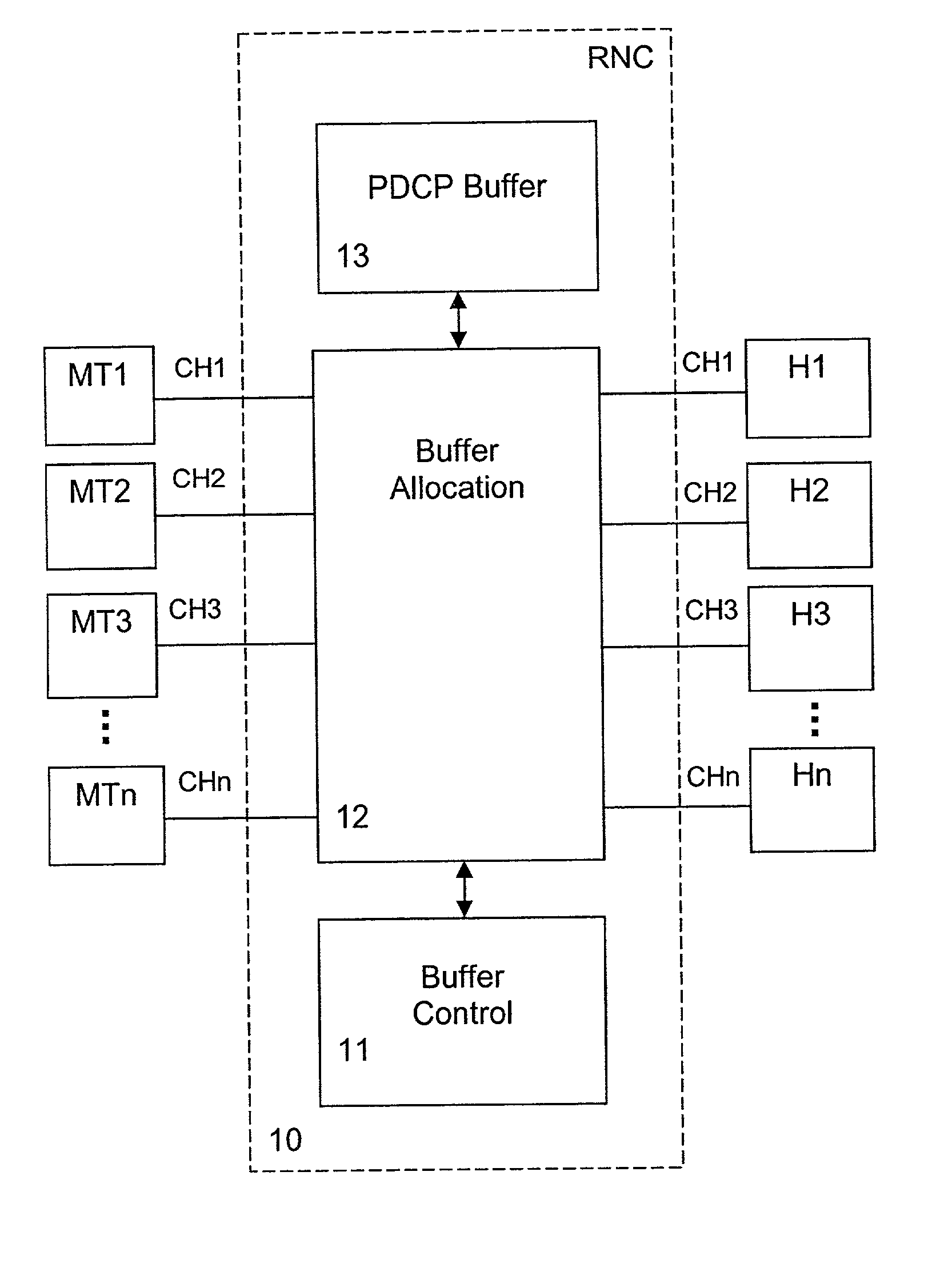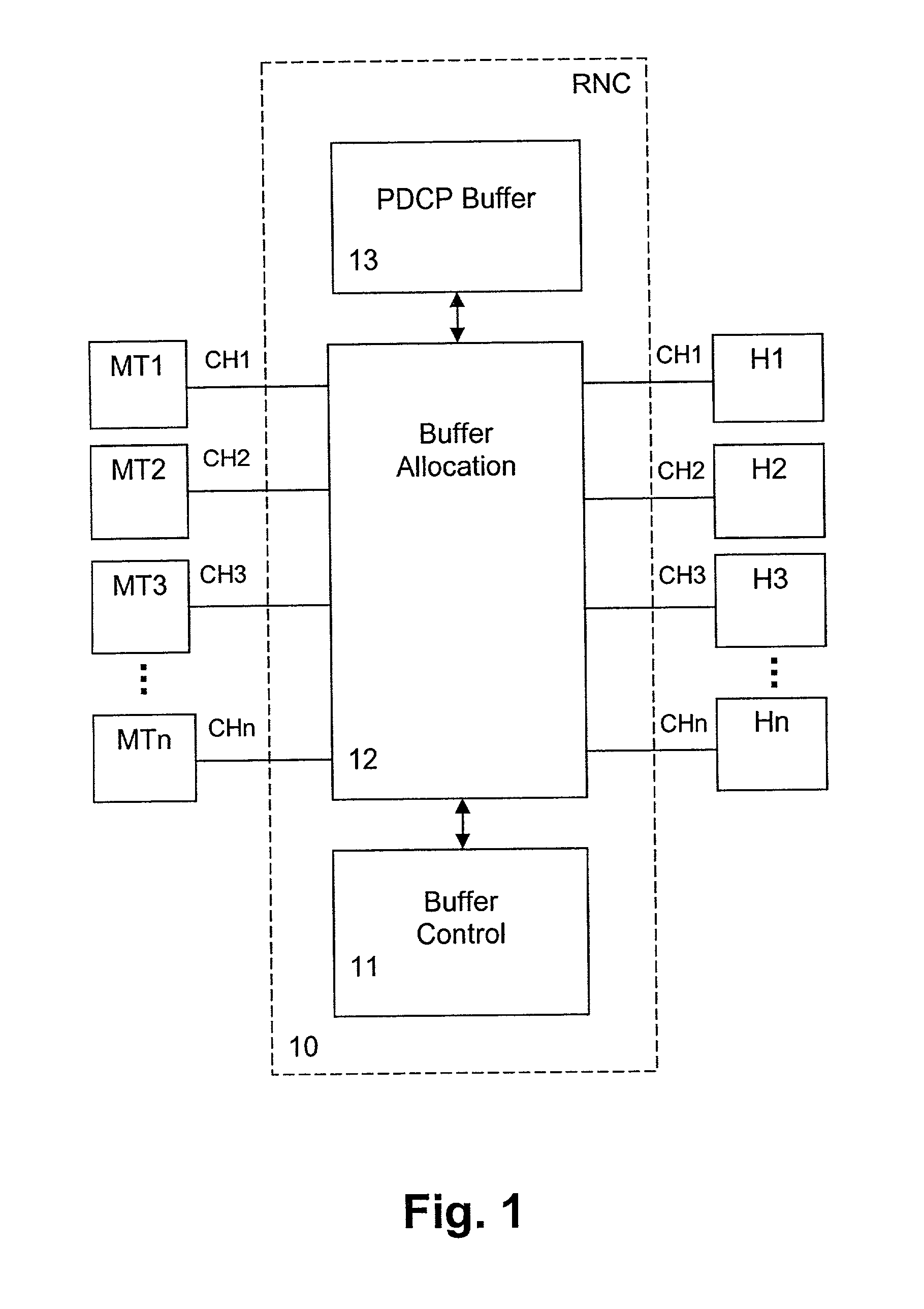Packet flow control method and device
a technology of flow control and packaging, applied in data switching networks, frequency-division multiplexes, instruments, etc., can solve the problems of bandwidth waste, end-to-end network performance degradation, and increase in number
- Summary
- Abstract
- Description
- Claims
- Application Information
AI Technical Summary
Benefits of technology
Problems solved by technology
Method used
Image
Examples
Embodiment Construction
[0039]The preferred embodiments of the present invention will now be described on the basis of a PDCP layer queuing management and a MAC layer QoS scheduling function in a Radio Network Controller (RNC) 10 of a 3G network.
[0040]In FIG. 1, a functional block diagram of those RNC PDCP layer functions relevant to the first preferred embodiment of the present invention are shown. In particular, a buffer allocation unit or functionality 12 is used for optimizing packet flow control by sharing or allocating memory space of a PDCP buffer 13 between / to respective channels CH1 to CHn which are allocated to prevailing or active connections between respective mobile terminals MT1 to MTn and corresponding Internet hosts H1 to Hn. In a special case, data may also be exchanged between mobile terminals, such that an Internet host may actually correspond to another mobile terminal. In each allocated or reserved one of the channels CH1 to CHn, data packets (e.g. PDCP PDUs) may be stored in respectiv...
PUM
 Login to View More
Login to View More Abstract
Description
Claims
Application Information
 Login to View More
Login to View More - R&D
- Intellectual Property
- Life Sciences
- Materials
- Tech Scout
- Unparalleled Data Quality
- Higher Quality Content
- 60% Fewer Hallucinations
Browse by: Latest US Patents, China's latest patents, Technical Efficacy Thesaurus, Application Domain, Technology Topic, Popular Technical Reports.
© 2025 PatSnap. All rights reserved.Legal|Privacy policy|Modern Slavery Act Transparency Statement|Sitemap|About US| Contact US: help@patsnap.com



